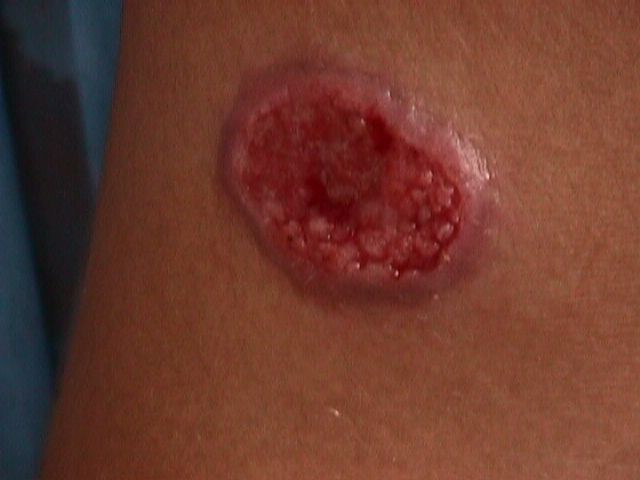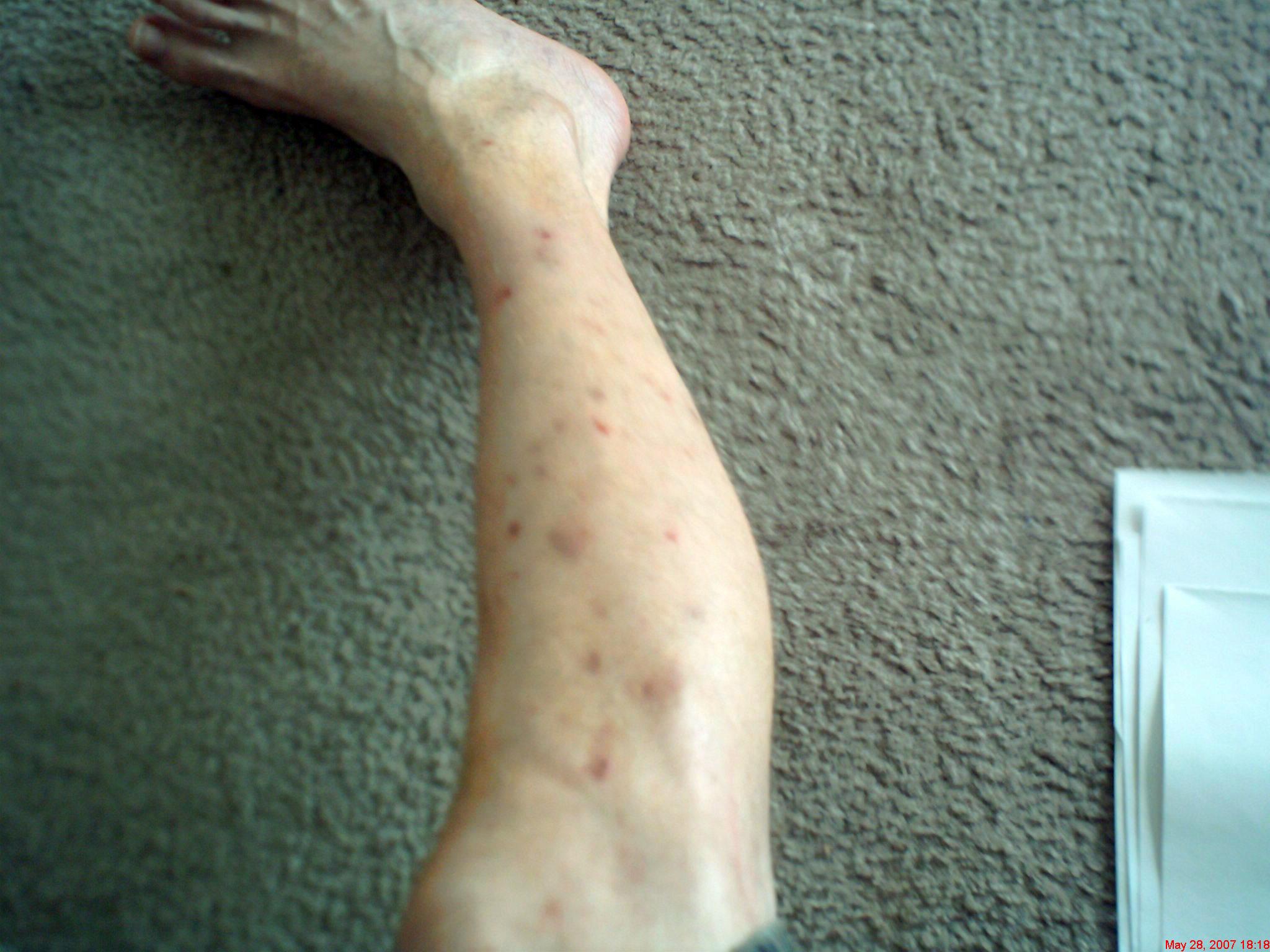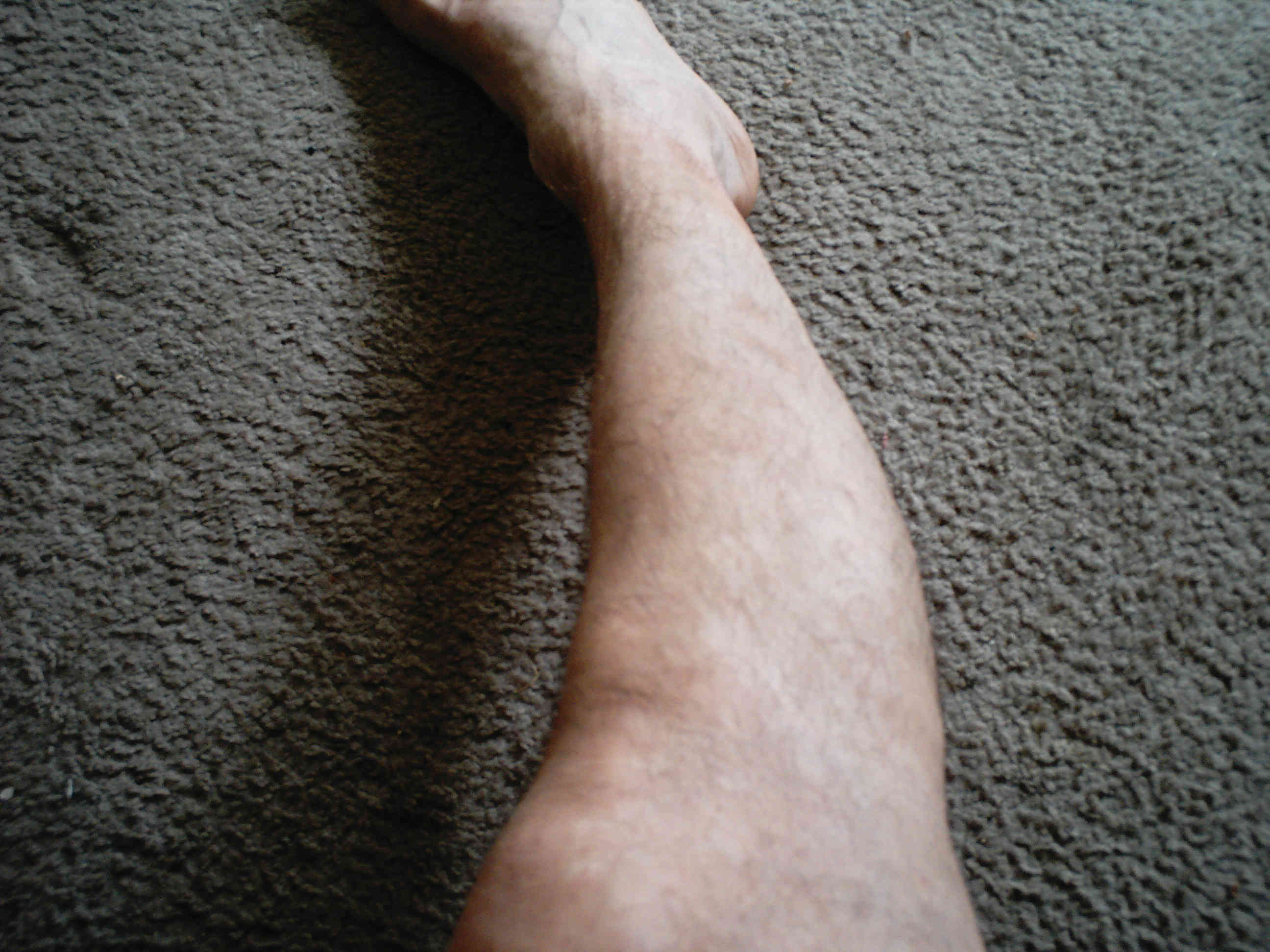Natural Leishmaniasis Treatments
Cutaneous (in the skin) Leishmaniasis
has no good conventional treatment in most countries. The medicines are
very toxic and not 100% effective. The formerly best drugs for treating
Leishmaniasis are called Pentosam and Glucantime, registered in Britain
since 1978. These drugs, which are based on the heavy metal antimony,
are not registered in the United States but U.S. servicemen are being
treated with them because the surgeon general of the Army has a special
arrangement with the Food and Drug Administration for "Investigational
New Drug Protocols," and the Centers for Disease Control maintain a
supply. Non-servicemen have to fly to England to buy the drug or hope
the CDC in Atlanta looks kindly on them. A promising new drug, Miltefosine
(labelled "Impavido" in Colombia, and "Miltex" in Chile, Germany, and
Singapore), has been approved for some leishmaniasis-endemic
countries. In 2004 Colombia was the first approved country. An email
friend there told me that Impavido is mostly reserved for the military
men who get the disease often from their treks in the jungle.
Miltefosine has a 95% cure rate. CDC
factsheet about Leishmaniasis

I obtained Cutaneous Leishmaniasis
in 2004 because I had a dog with it while I was in Paraguay, South
America. I have always been very sensitive to chemicals which is why I
wouldn't take the toxic medicines for it. I have tried many
things to combat it and have discovered much through trial and error.
The first leishmaniasis "sore" I had was on my leg but then they
started to appear on my scalp. I guess I had scratched the original
sore and then transferred the parasite by fingernail by scratching my
head. The sores became plentiful and and I started experimenting with
non-drug medicinal approaches. After 10 months from the initial
infection I started to feel very tired and so I started doing blood
electrification which greatly helped by fighting the remnants of it in
the blood. With the visceral type there is infection of macrophages (a
type of immune system cell), liver, spleen, sometimes the brain, and
the skin. Anemia is one of the main symptoms of it because of red blood
cell destruction in the spleen by the parasites. As of this writing I
have had the disease for 5 years. Here's a listing of some of the
things that I have experimented with:
The Rainforest Herbs that are somewhat anti-protozoal
(Quinine and Simarouba from www.rain-tree.com for $20 each) can be taken as a
tea and/or applied as a paste to the skin. The tea is bitter when taken
at therapeutic dosage (1 tblspn each to a quart of water) but it is the
best way to get it into the lymph system. I also tried them as a paste
that I made by cooking the tea down until it is almost dry (with the
reason for making tea being to release all the active chemicals from
the herbs), then mixing the nearly dry mush with moisturizing lotion
(with Petrolatum in the ingredient list) and a little bit of MSM
cream (not essential but it increases its ability to penetrate the
skin). The MSM can be left out if it causes too much pain. Result: not
very effective.
Colloidal Silver solution (which you can make
yourself) may help because it's been reported successful against the
protozoan that causes malaria. I started out drinking one cup of
homemade 17ppm solution daily but started getting too toxic from it. So
I stopped using it for a week and then recommenced by taking 1/4 cup
daily. But I did notice the sores diminishing while I drank a full cup
daily. Result: too toxic to be considered a good remedy.
Vegetarianism: I think that because the
parasites are in and under the skin that the immune cells in the lymph
fluid have more of an opportunity to fight them than those in the
bloodstream. Therefore I think it important to eat as close to a vegetarian
diet as possible (and absolutely no dairy since it congests
the lymph) to keep the lymph as fluid as possible. All animal source
foods (meat, eggs, etc) are congesting to the lymph. Click here to read more about the
lymph.
From a July 26, 2005, article entitled "Metabolism
Cycle of Kala-Azar Parasite Revealed":
"Researchers have found that the Leishmania parasites utilize mannose
[a type of sugar] for their metabolism and growth, different from human
metabolism which requires glucose. Associate Professor Malcolm
McConville and his research team from Bio21 Institute at the University
of Melbourne have found a breakthrough to control the spread of the
parasite Leishmania in the blood. Leishmania is found to utilize the
sugar mannose in the blood for their metabolism and growth."
[D-mannose is a monosaccharide sugar found naturally in fruits and
actually is similar to glucose EXCEPT in its three-dimensional form
(stereochemistry). The sugar D-mannose is also found in relatively
large quantities in fruit such as peaches, pineapple, apples, oranges,
and certain berries, like cranberries and blueberries. So, from this
info I have been avoiding the listed fruits. Possibly by starving them
of mannose it will help restrict their proliferation.] Very
important is for people with leishmaniasis to stop ingesting sugar in
all forms, not just fruit sugar. This has been essential for me. Sugar
feeds the parasite. I read in a scientific report that raised blood
sugar levels (which happen after ingesting anything sweet) instigates a
succession of chemical processes that favor the parasites.
My Progress
After trying the above things I was still
pretty infected and disappointed. Then I tried some other things which
I report on below. So if you don't want to fly to one of the countries
where Miltefosine is available you could use the following list of
non-drug ways I used to fight this disease.
I have suffered very much from this disease and would be very pleased
to help others get some relief from it.
This is a picture of my leg about
half way through its healing.

THIS IS MY LEG AFTER HEALING:

NEXT PAGE
Counter starting March 26, 2015:

Measure Website Visitors
|


